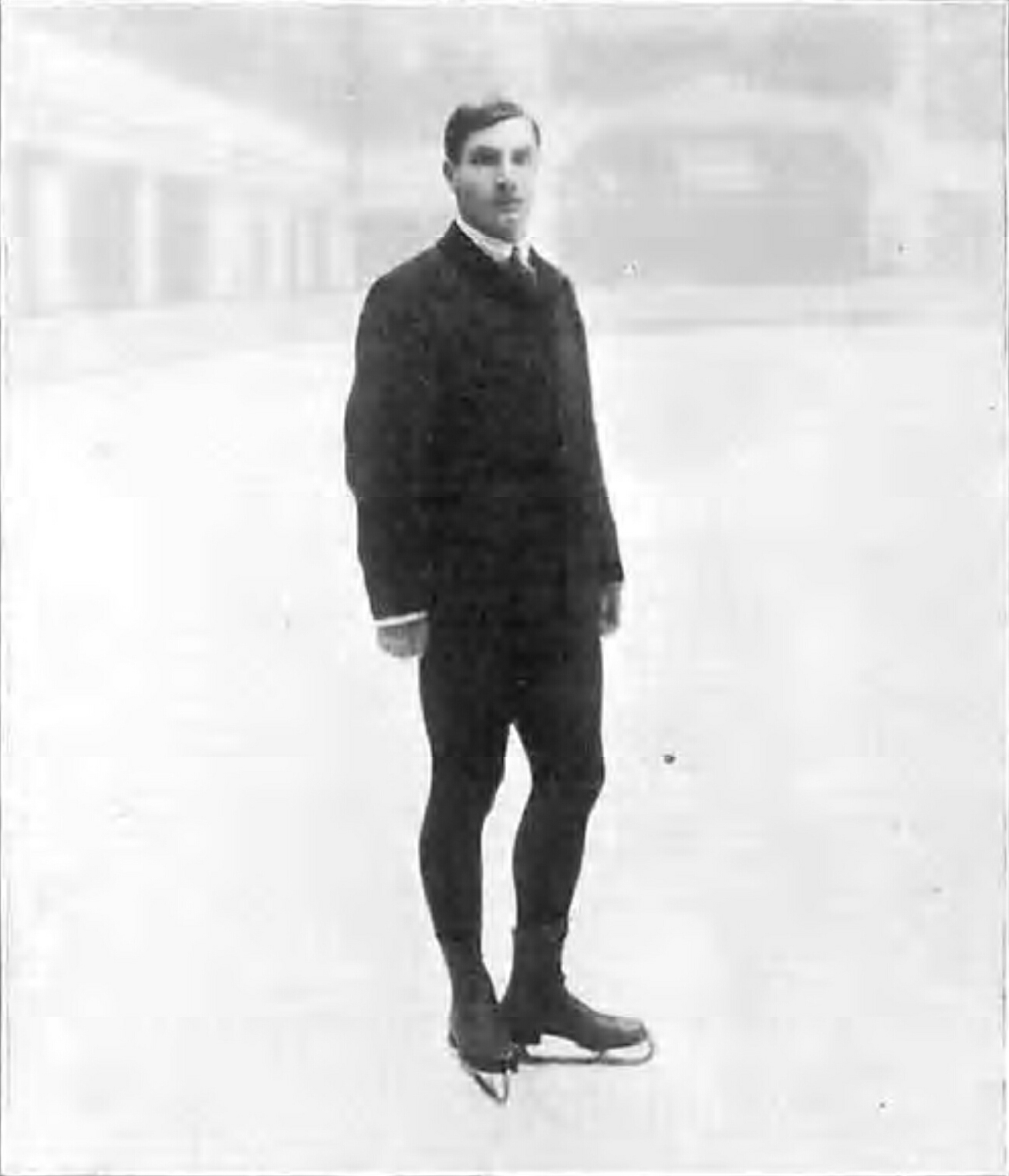Salchow Jump on:
[Wikipedia]
[Google]
[Amazon]
The Salchow jump is an edge jump in
 The Salchow jump was named after its inventor, Swedish world champion
The Salchow jump was named after its inventor, Swedish world champion

File:Sarah Isabella Bardua - 2018 Autumn Classic - 7.jpg, Sarah Isabella Bardua begins the take-off of a Salchow
File:Photos – World Championships 2018 – Men (Keiji TANAKA JPN – 13th Place) (3).jpg, Keiji Tanaka begins the take-off of a Salchow
File:Roman Sadovsky - 2018 Skate Canada - 03.jpg, Roman Sadovsky begins the take-off of a Salchow
File:2011 Rostelecom Cup - Lacoste-1.jpg,
"ISU Figure Skating Media Guide 2023/24
. (Media guide) International Skating Union. 17 October 2022. Retrieved 28 June 2024. * Kestnbaum, Ellyn (2003). ''Culture on Ice: Figure Skating and Cultural Meaning''. Middletown, Connecticut: Wesleyan University Press. . {{DEFAULTSORT:Salchow Jump Figure skating elements Jumping sports
figure skating
Figure skating is a sport in which individuals, pairs, or groups perform on figure skates on ice. It was the first winter sport to be included in the Olympic Games, with its introduction occurring at the Figure skating at the 1908 Summer Olympi ...
. It was named after its inventor, Ulrich Salchow
Karl Emil Julius Ulrich Salchow (7 August 1877 – 19 April 1949) was a Danish-born Swedish figure skater, who dominated the sport in the first decade of the 20th century.
Salchow won the World Figure Skating Championships ten times, fr ...
, in 1909. The Salchow is accomplished with a takeoff from the back inside edge of one foot and a landing on the back outside edge of the opposite foot. It is "usually the first jump that skaters learn to double, and the first or second to triple".Kestnbaum, p. 284 Timing is critical because both the takeoff and landing must be on the backward edge. A Salchow is deemed cheated if the skate blade starts to turn forward before the takeoff, or if it has not turned completely backward when the skater lands back on the ice.
In competitions, the base value of a single Salchow is 0.40, for a double Salchow it is 1.30, for a triple 4.30, 9.70 for a quadruple, and 14 for a quintuple.
History
 The Salchow jump was named after its inventor, Swedish world champion
The Salchow jump was named after its inventor, Swedish world champion Ulrich Salchow
Karl Emil Julius Ulrich Salchow (7 August 1877 – 19 April 1949) was a Danish-born Swedish figure skater, who dominated the sport in the first decade of the 20th century.
Salchow won the World Figure Skating Championships ten times, fr ...
in 1909.Media guide, p. 16 According to writer Ellyn Kestnbaum, American skater Theresa Weld "received reprimands" at the 1920 Olympics
The 1920 Summer Olympics (; ; ), officially known as the Games of the VII Olympiad (; ; ) and commonly known as Antwerp 1920 (; Dutch language, Dutch and German language, German: ''Antwerpen 1920''), were an international multi-sport event held i ...
"for performing a single Salchow jump because her skirt would fly up to her knees, creating an image deemed too risque".
Firsts

Multiple quadruple Salchows in one program
Execution
As defined by the ISU, the Salchow jump is an edge jump. Its takeoff is made from the back inside edge of one foot and its landing is made on the back outside edge of the opposite foot. The skater enters into the jump with a backward approach, launches it using their inside edge, and lands on the opposite outside edge. The free leg is extended behind the skater and swings toward the front as they spring into the air while, at the same time, drawing in their arms. Skaters do not have to draw in their arms or free leg close to their bodies while performing the single Salchow because bringing the free side of their bodies forward and around the opposite side of their bodies after they turn towards the back, is enough to produce the necessary rotation. The rotation in the air, with respect to a fixed point, is slightly less than 360 degrees because the takeoff edge curves in the same direction as the rotation in the air. When a skater pulls the arms into their body and/or brings their free leg inward, more rotations can be performed; for this reason, the Salchow is "usually the first jump that skaters learn to double, and the first or second to triple". As U.S. Figure Skating states, however, "timing is critical" because both the takeoff and landing must be on the backward edge.Gallery
Amélie Lacoste
Amélie Lacoste (born December 17, 1988) is a Canadian former competitive figure skater. She is the 2010 Skate Canada International bronze medallist and the 2012 Canadian Figure Skating Championships, Canadian national champion. Her highest place ...
landing
Footnotes
References
Works cited
* Hines, James R. (2011). ''Historical Dictionary of Figure Skating''. Lanham, Maryland: Scarecrow Press. ."ISU Figure Skating Media Guide 2023/24
. (Media guide) International Skating Union. 17 October 2022. Retrieved 28 June 2024. * Kestnbaum, Ellyn (2003). ''Culture on Ice: Figure Skating and Cultural Meaning''. Middletown, Connecticut: Wesleyan University Press. . {{DEFAULTSORT:Salchow Jump Figure skating elements Jumping sports